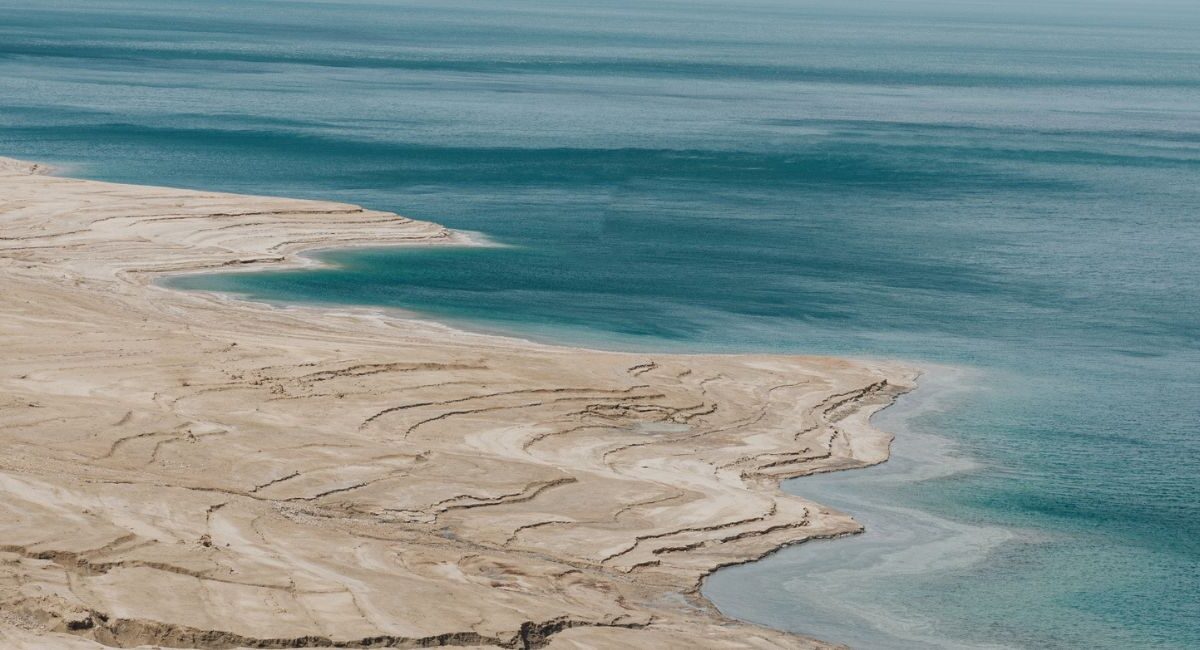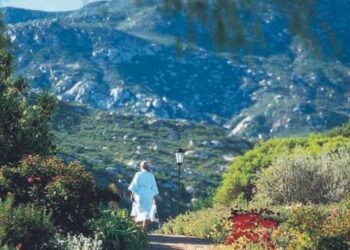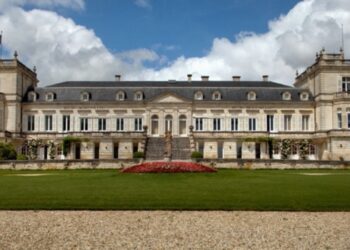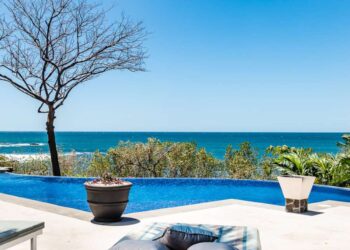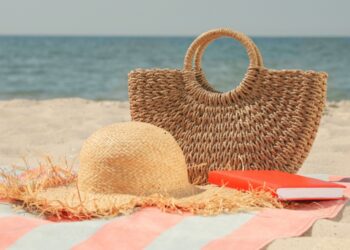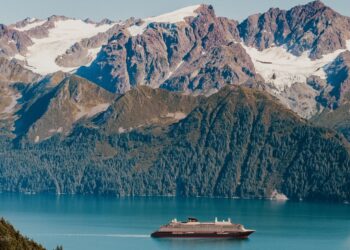“Breathe deeply, let the salt fill your lungs. Doesn’t it feel marvelous?” I am standing on a California bluff overlooking the Pacific Ocean where I am participating in a thalassotherapy beach walk. Anne Bramham, spa educator and founder of ASTECC, a spa curriculum bridging traditional rehabilitation and holistic wellness, cautions that this is “not a merry stroll. You will get your heart rate up.” Together, in soft deep sand we march, the pace is brisk. When we reach a giant sand hill, flanked by hundreds of seagulls, my instructor pauses. “Remember when you were a child? Well, go.” Arms outstretched, she charges as I follow, driving gulls into the air. Moments later, we are in the sea, wading through knee-deep saltwater. We repeat the sand-marching, hill-racing, seawater-treading circuit three times until, wet and tired, we retreat into a cove, and sit — deeply breathing in the salty ocean air — as she reminds how the negative ions positively impact our wellbeing; and how the saltwater is good for our skin.
Throughout history, salt has been touted for its countless healing properties. Egyptians are believed to have been the first to use salt to disinfect wounds. The Mayans ingested salt mixed with other ingredients for a variety of purposes: with marjoram and xul tree leaves for birth control, with oil for epilepsy, and with honey for childbirth pains. The Romans prescribed salt fish — a sauce made by alternating layers of fish scraps and salts in earthen pots — for digestive disorders, sores, tuberculosis, and migraine headaches. And the Greeks used salt blended with honey to clean ulcers and drank saltwater with milk for spleen diseases. Hippocrates himself prescribed saltwater steam inhalation for respiratory ailments.
Still, the ocean — submerging and swimming in saltwater (with a salinity of 3.7 percent) — and bathing in mineral salts have been embraced as the most versatile salt healers. But there are other bodies of water with even higher salt concentrations than the sea — i.e. Africa’s Lake Assal (35 percent salinity) and the Dead Sea (34 percent) — where you can blissfully float, soak, and absorb the healing benefits of salt. A look:
Laguna Cejas, Chile

High in Chile’s Atacama Desert, the driest in the world, the terrain is white-caked with craters and brine lakes including Laguna Cejas, said to be among the world’s saltiest lakes. Technically, Laguna Cejas is not a lake at all, but rather a large sinkhole. A group of us — a family of four, two teens from Santiago, and I — biked 12 heavily sanded miles to Laguna Cejas from Explora Atacama where we were staying. “Keep your shoes on; you don’t want to risk cutting your feet,” cautioned our guide. But his words came one millisecond too late. In anticipation of the buoyant soak, one of the teens had already slipped off her flip-flops, scraping the side of her foot on a salt-coated ‘rock’ in the process. “Ouch,” she shrieked as she descended into the lake, saltwater hitting the fresh wound. “It will hurt,” our guide said sympathetically. “But the salt will quickly heal it, no worries.” And indeed, after an hour of floating and bobbing under a surreal blue-pink sky, and emerging from the water — covered with layers of white salt residue — any sign of an injury had disappeared. The next day we hiked over giant sand dunes to a 12,000-year-old glacier. Our guide led us on hands and knees inside a crater. “Stop,” she said. “Do you hear it?” We paused to listen to the odd creaking sounds, reminiscent of rain hitting a tin roof in slow, dramatic patterns. “It’s the music of the salt crystals expanding. These rocks are not rocks, they are pure salt.” We sat, hunkered for a while longer, and listened to the salt sing.
The Salinity Factor: 20 to 28 percent
Where to Stay: Explora Atacama just outside the small village of San Pedro de Atacama, Explora offers 50 rooms with desert and mountain views, haute Chilean cuisine, and personalized guided experiences to the salt flats, hot springs, hiking, horseback riding, and biking treks.
The Dead Sea, Jordan
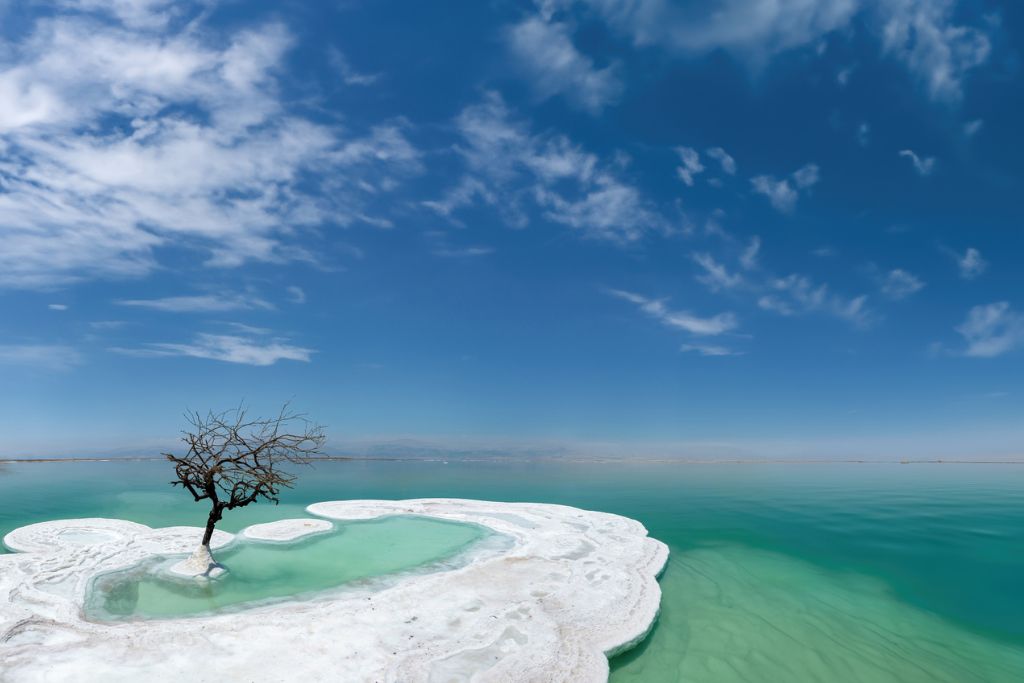
Probably the most known salt lake, The Dead Sea (at 430.5 meters below sea level, the lowest point on Earth) — is located between Jordan and Israel. Its high salt content makes swimming impossible; floating on the water’s surface is the only option, and travelers come from around the world for the buoyant experience. This endorheic lake’s minerals, including sodium and calcium chloride, are said to have health benefits that range from boosting immunity to strengthening bones. Cleopatra was said to have been a frequent visitor.
The Salinity Factor: 34 percent
Where to Stay: Kempinski Hotel Ishtar Dead Sea, Swaimeh, Jordan: Set right on the edge of the Dead Sea, and features its own private beach. The hotel’s award-winning spa also offers treatments infused with Dead Sea minerals.
The Red Sea, Egypt
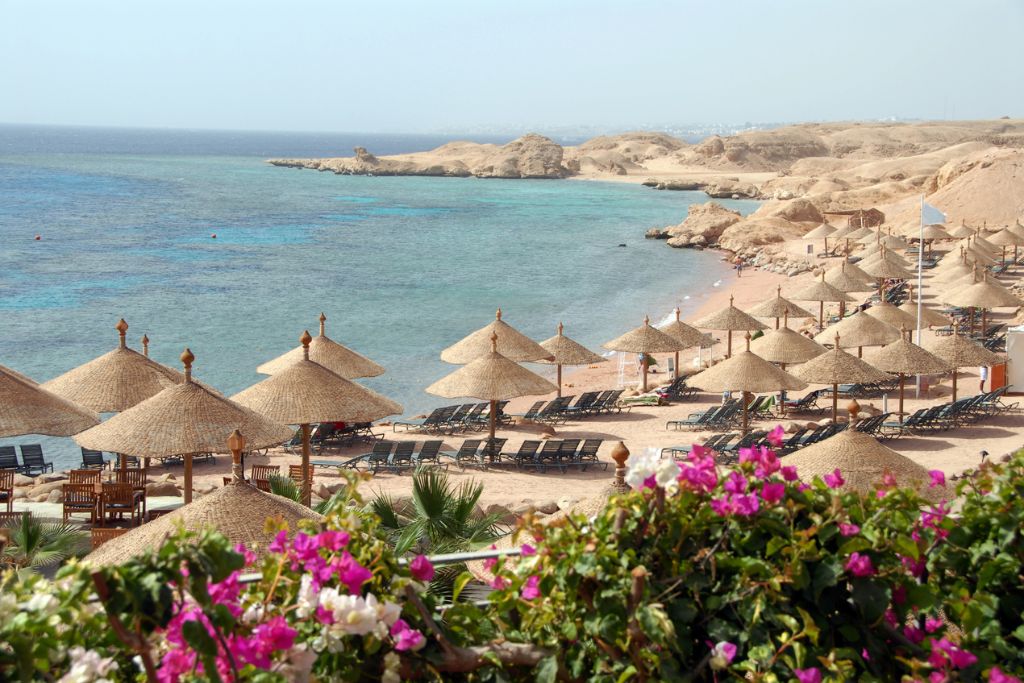
Stretching along the coast of Egypt, Sudan, and Saudi Arabia, The Red Sea — with a lower salt density than the lakes but still higher than the ocean — makes it conducive for swimming, snorkeling, and diving, all while absorbing the saltwater’s major health benefits. The Red Sea is actually an intense bluish green most of the time. The reddish color comes from an algae which, when it dies off, turns the sea the reddish brown color it’s named after. The presence of mineral salts like sodium, chloride, sulfate, and magnesium helps reduce skin inflammation. Those with psoriasis and eczema will find their skin smoothed by the salts. The Red Sea’s high saline concentration is also said to improve blood circulation: water temperatures average 64F in winter and 84F in summer.
The Salinity Factor: 40 percent
Where to Stay: Four Seasons Resort Sharm El Sheikh, Egypt: An Arabian fairytale with year-round sun; sleek, modern accommodations; over 3,000 palm trees and panoramic views of the Red Sea. Many of the recognized dive sites are only minutes from the resort.
Lake Assal, Africa
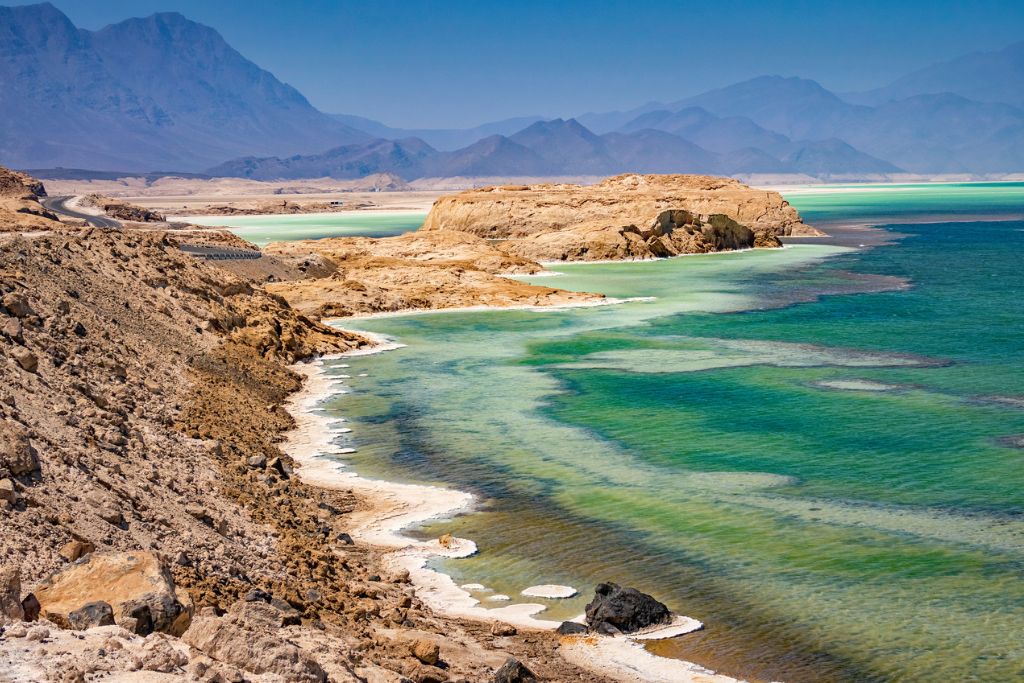
Eerily apocalyptic, Lake Assal, in the desert region of central Djibouti, is considered the second saltiest lake in the world (after inches-deep Don Juan Pond Lake in Antarctica which weighs in at 40 percent saline density). Long the epicenter of Africa’s salt trade, the lake is nearly 500 feet below sea level on the lowest point of Africa. It’s high salt concentration (almost ten times that of the ocean) and stark landscape — turquoise, emerald, blue-hued waters surrounded by ‘white gold’ (salt) and black lava sediment — attract visitors, (though, it’s never crowded) who float in the highly saline waters to relax.
The Saline Factor: 35 percent
Where to Stay: Djibouti Palace Kempinski, Djibouti: Located in the Horn of Africa, this luxurious property rests at the crossroads between the Red Sea and the Indian Ocean. Lake Assal is a two-hour drive and a guided experience may be arranged through the concierge.
The Pink Salt Lake of Torrevieja, Spain
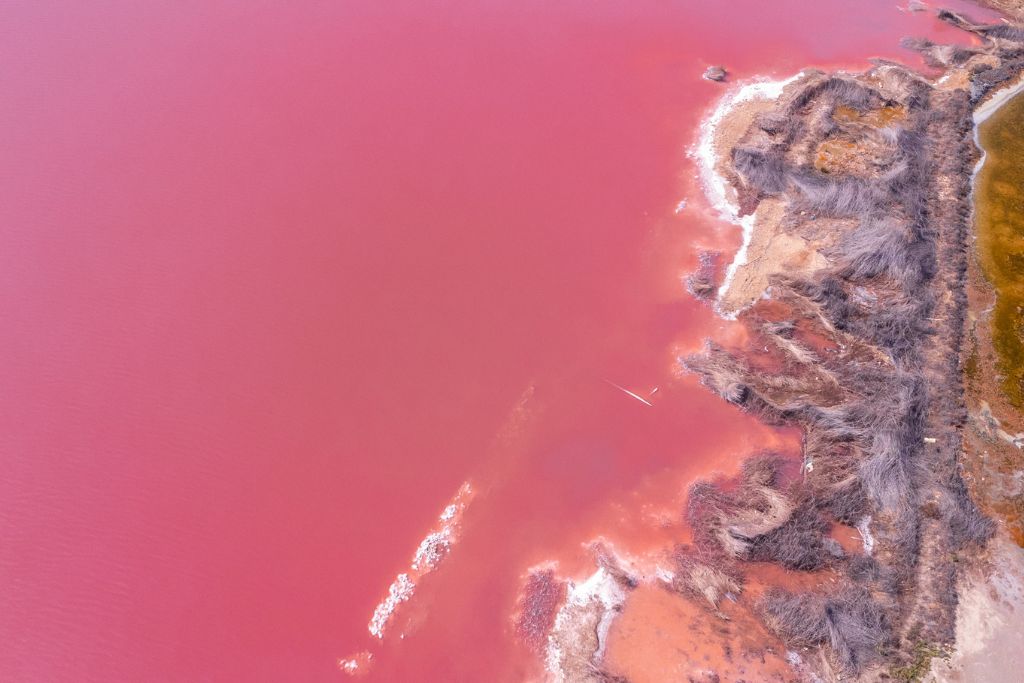
Nearly two decades ago, the World Health Organization named Costa Blanca, Spain one of the healthiest places to live. Its sunny climate (320 days of sunshine per year), average temperatures (64F to 82F), and pretty-in-pink lake — Las Salinas de Torrevieja — all play a role. The lake’s bubblegum pink hue is attributed to a rare type of micro algae that thrives in exceptionally salty conditions. The pink color is not immediately visible from the distance but turns pinker the closer you walk to the water. The lake is protected, and swimming is not permitted despite the lake’s high salt content and mud being good for the skin and joints. Still, it’s an amazing sight to see, especially during migratory seasons when 2,000 pink flamingos visit the rose-hued lake.
The Salinity Factor: 20-25%
Where to Stay:
Airbnb Chalet, Torrevieja: Explore the pink lake during a stay at this beachfront chalet overlooking the Mediterranean Sea. Featuring six bedrooms and six bathrooms, the chalet—filled with furnishings and artwork collected from around the world. Sleeps 11 people.
Feature image courtesy of Mlenny, Stock. Travel Curator may earn a commission from booking links on this page.

